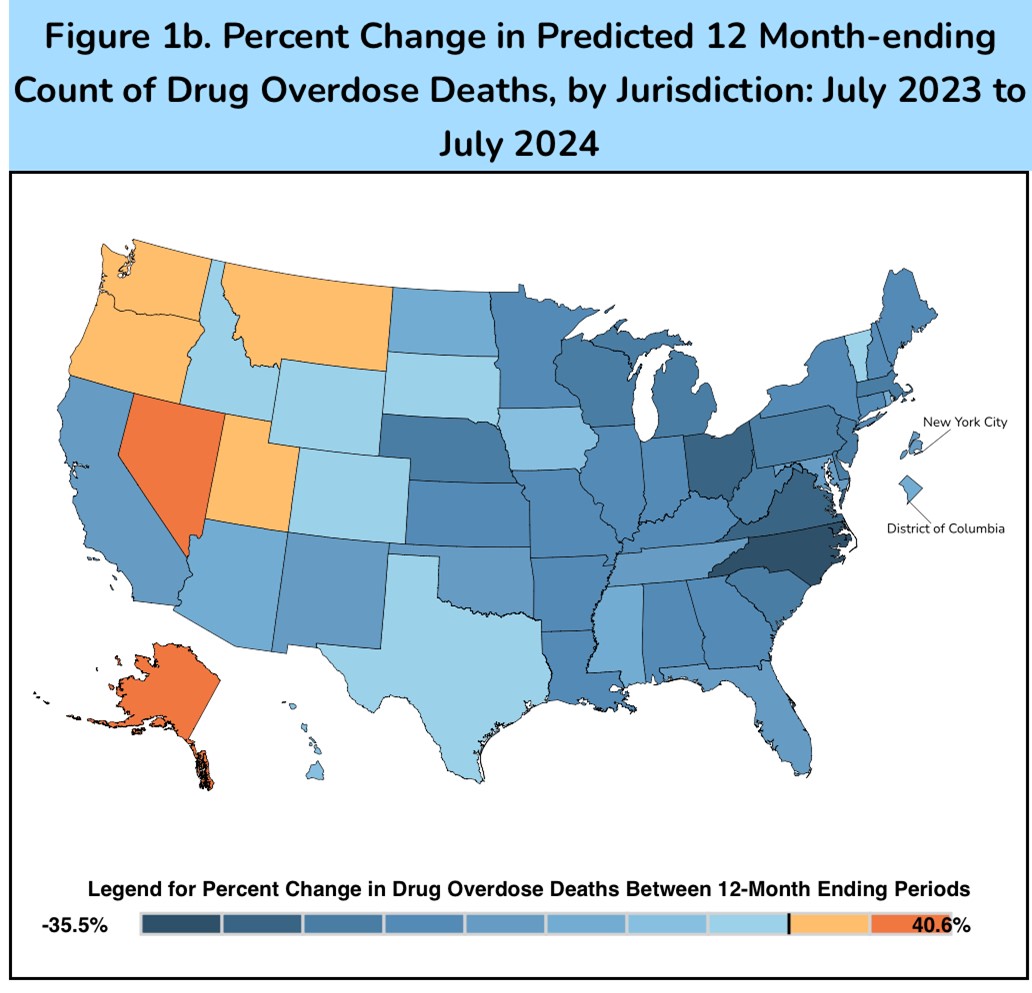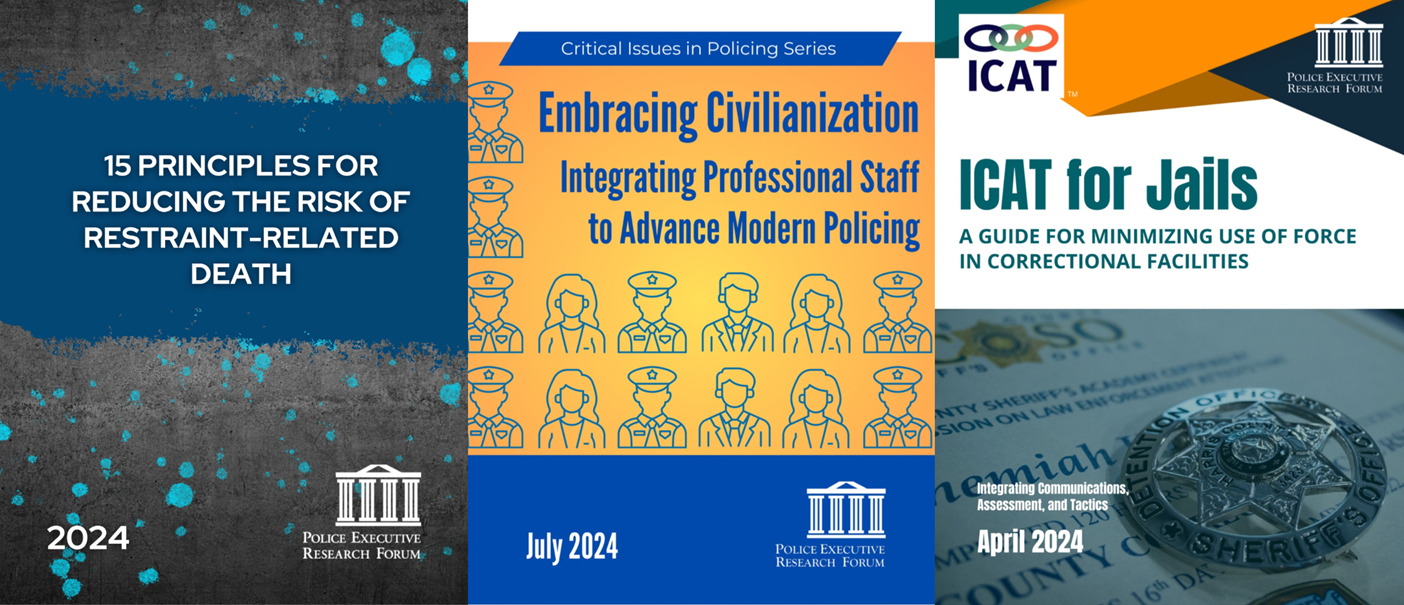|
January 4, 2025 A look back on 2024, and a look ahead to 2025
PERF members, Happy New Year! I hope you had a relaxing holiday and spent some quality time with family and friends. This week I’m going to look back at some of the top issues and stories from the past year, look ahead to some of the issues that may come to the forefront in 2025, and share information about a few upcoming PERF events. Top stories of 2024 Here are some things I’ll remember when thinking back on 2024: Drop in murders: The Real-Time Crime Index is showing murders decreased more than 15 percent from 2023 to 2024, and some cities are seeing even greater successes. Boston recorded its fewest homicides since 1957, and many other cities saw large decreases. As crime analyst Jeff Asher wrote on Substack, “The nation’s murder rate has largely erased the post-COVID surge and was roughly around or [at] 2019’s level while reported violent and property crime were likely amongst the lowest rates recorded since the 1960s and 1970s. . . . Murder likely fell at the fastest rate ever recorded in 2024 after falling at the fastest rate ever recorded in 2023.” If you’re interested in more discussion on this topic, Rohit Acharya and Rhett Morris analyzed homicide trends over the past four years in a recent piece for Brookings, and Charles Fain Lehman of the Manhattan Institute spoke with journalist Derek Thompson about declines in murder and drug overdose deaths on Thompson’s Plain English podcast. Drop in overdose deaths: The CDC reports that predicted drug overdose deaths decreased from about 113,000 to approximately 94,000, a drop of nearly 17 percent, over the 12-month period that ended in July 2024.
PERF has published several reports on this topic, including Policing on the Front Lines of the Opioid Crisis (2021), The Unprecedented Opioid Epidemic (2017), and Building Successful Partnerships between Law Enforcement and Public Health Agencies to Address Opioid Use (2016). Election results favor tougher approach to crime: In the November elections, several states passed measures implementing a more enforcement-heavy approach to crime — most notably California, which passed a proposition about retail theft and drug offenses. As I wrote at the time, I think these results reflect a shift in Americans’ attitudes toward crime and policing. Police chief changes in major cities: A number of new police chiefs took over in major cities this past year. In the country’s two largest cities, Jim McDonnell was named LAPD chief in October, and Jessica Tisch was appointed NYPD commissioner in November. This continues a national trend, as the Major Cities Chiefs Association reported that 75 of its 79 member agencies experienced leadership turnover between 2020 and late 2023. For more, see this recent Pittsburgh Post-Gazette article on the topic. Hiring and retention challenges: PERF’s survey earlier this year found that our member agencies’ sworn staffing numbers rose slightly in 2023 after three straight years of decreases. Small- and medium-sized responding agencies had higher staffing numbers in 2023 than in 2019. But staffing in large agencies was still nearly 5 percent below 2019 levels, and many agencies reported continued staffing issues in 2024. In one extreme example of these staffing challenges, the Fremont, California, Police Department recently announced they are offering 10 lateral transfers a $100,000 signing bonus. Lateral transfers may help the agency welcoming a new officer, but they leave a vacancy in the agency the officer leaves. If someone had told you 10 years ago that a police department was offering a $100,000 signing bonus, I doubt you would have believed them.
And the state of Florida has paid $5,000 bonuses to more than 5,400 new officers since 2022. I expect these staffing reductions will be a continued challenge for law enforcement agencies, as they may have to make cuts or alterations to service. News from PERF: Closer to home, PERF released several new publications this year, including guidance on reducing the risk of restraint-related death. The result of a meeting of doctors, medical examiners, and police use-of-force experts, this report helps agencies institute the proper training, policy, and supervision to more safely restrain subjects in the field. I think it can save lives, as well as the careers of officers and emergency medical responders. It should be read by everyone in our profession.
PERF also released reports on better integrating professional staff into police agencies, implementing ICAT training in correctional settings, and improving police promotional processes, as well as a webinar series on supporting officer wellness. Baltimore bridge collapse: And, while it may not be one of the biggest stories of the year, I want to recognize the heroism and professionalism exhibited by the police officers who saved lives by stopping traffic and joining the rescue efforts when the Francis Scott Key Bridge collapsed in Baltimore in March. A look ahead to 2025 These are a few of the key issues police chiefs and sheriffs may face in 2025: Immigration: The new presidential administration has vowed to take a harder line on enforcing immigration laws, and is expected to incorporate state and local law enforcement into those efforts. This will likely pose a challenge for police departments and sheriffs’ offices that are working to build ties with their immigrant communities so they report crime and other public safety issues. Consent decrees: The first Trump administration largely took a hands-off approach to federal “pattern or practice” civil rights investigations, and I expect the second Trump administration will generally see policing as a local, rather than federal, issue. Municipalities currently under investigation may have more degrees of freedom as they work to address federal investigations. We have already seen Memphis and Phoenix take a different approach, as city leaders have pushed back against federal investigations. In somewhat similar circumstances eight years ago, the U.S. Department of Justice issued its findings report about the Baltimore Police Department and signed an agreement in principle with the city in August 2016, then the two parties entered into a consent decree eight days before President Trump took office. The following day DOJ issued its findings report about the Chicago Police Department and signed an agreement in principle with the city, but the parties did not enter into a consent decree. In 2019, the city did enter into a consent decree with the State of Illinois in federal court. Homelessness: Last week the U.S. Department of Housing and Urban Development announced their annual count found an 18 percent increase in homelessness this year, which comes after a 12 percent increase in 2023. The Supreme Court decided in June that municipalities are allowed to enforce ordinances that ban camping on public property, and I expect many police departments and sheriffs’ offices will be involved in their jurisdictions’ approaches to addressing the increase in homelessness. Managing campus protests: After significant protest activity related to the Israel-Hamas conflict in the spring, college campuses saw fewer demonstrations when classes resumed in the fall. But the change in presidential administrations may bring renewed protests on campuses and beyond. Artificial intelligence: I expect artificial intelligence to continue changing policing in ways that are both good and harmful. In April, I wrote about a meeting PERF co-hosted at the Harvard Kennedy School exploring some of the possible uses for artificial intelligence in policing. Sometimes it feels like artificial intelligence is being incorporated into nearly everything, and I’ll be interested to hear how you’re using it in your agencies. I hope the practitioners in the field drive the discussion about how this technology should be used. Upcoming PERF events I hope to see you at one of our upcoming PERF events. Our Annual Meeting will be held May 28-30 in Nashville, and we will be sending out registration information shortly.
Our Third Annual National ICAT Conference will be held February 18-19 in Clearwater, Florida. PERF and experienced ICAT trainers will share the latest updates to the training program, discuss PERF’s recent work on reducing the risk of restraint-related deaths, and ask agencies to share lessons they’ve learned as they’ve implemented ICAT. Click here for more information and to register. We also currently have space available in our ICAT train-the-trainer sessions on February 4-5 and April 8-9. Additional training dates will be posted on our ICAT page throughout the year. New PERF report will be released next week And in next Saturday’s column we’ll be releasing a new report on managing “officer-involved critical incidents” — incidents in which an officer causes or contributes to a death or serious physical injury. PERF has done extensive work on reducing use of force over the past decade, but this publication provides guidance on how agencies should prepare and respond for the times when these incidents do occur. I look forward to sharing more next week. Attacks in New Orleans and Las Vegas Finally, my thoughts are with all those affected by the attacks in New Orleans and Las Vegas this past week. We’re still learning more about what happened and why, but I encourage police executives to study these incidents and the police response for any potential lessons. And thanks to NOPD Superintendent Anne Kirkpatrick, LVMPD Sheriff Kevin McMahill, and all the local, state, and federal law enforcement officers who swiftly responded to these tragic incidents. Best, Chuck |




